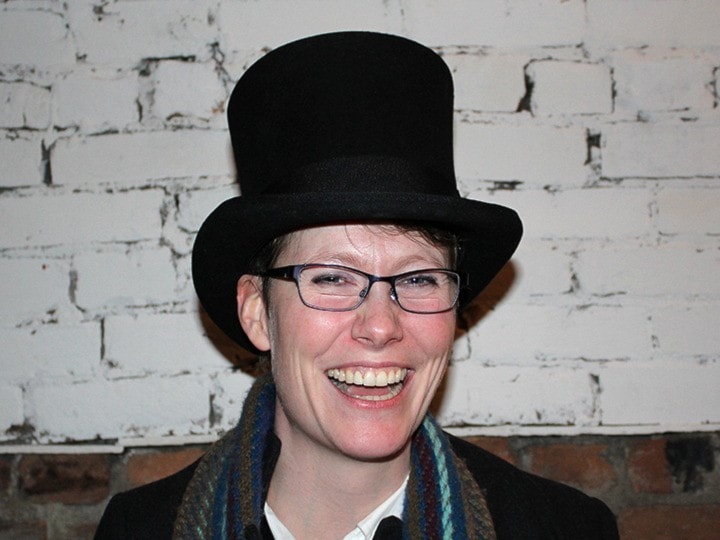By Ezra Black
In A Christmas Carol, Charles Dickens invented the version of Christmas that we celebrate today, says a local performer.
The redemption of old Ebenezer Scrooge at the hands of three ghosts helped put religion and charity back into the holiday and is still valid today, she added.
For this reason and others, Lindsay Vallance donned her top hat and suit to read an abridged version of A Christmas Carol to a small audience at The Arts Station last Wednesday.
It was Vallance’s third annual performance of the one-woman show.
“I started doing it because, when I was a kid I listened to Patrick Stewart’s A Christmas Carol and he used to do a one-man show every year,” she said. “I listened to it probably hundreds of times. I love the storytelling and the ability to put on a great show with just you and a stage.”
Vallance holds a multi-disciplinary fine arts degree and said A Christmas Carol helped define how Christmas is celebrated today in North America.
Before Dickens, Christmas had lost a lot of its religious meaning, said Vallance. It all started when Oliver Cromwell and his Puritans won a bloody civil war to dethrone Charles I.
After their victory, the Puritans banned the celebration of Christmas and other holy days for a period of approximately 20 years in the 1640s.
“During that time it was not celebrated in Britain because it was considered to be a pagan holiday and full of drinking and feasting and throwing up everywhere, which it was,” said Vallance.
The prohibition remained in effect until the Restoration of 1660. The monarchy was back in power and people were once again allowed to celebrate Christmas. But Vallance said that people had missed it so much that they began partying even harder than ever at Christmas time.
“When it came back after Restoration, people didn’t associate it with charity and domesticity and being kind to other people,” she said. “They were just like, let’s just drink until we can’t feel feelings anymore and it’ll be great.”
The holiday was changing into a more religious festival by the time A Christmas Carol came along in the 1800s, said Vallance.
That’s because Dickens wanted to save Christmas, “from the grinding gears of industrialization.”
Britain, at the time, was transforming into an industrial power. The economy was turning from barter-based to monetary and the problems this created were making people nostalgic for a simpler time, said Vallance.
“It’s an interesting Christmas story,” she said. “It has a lot of Victorian things about chestnuts and cherry-cheeked urchins but it also has ghosts and scary parts, which saves it from being completely and utterly sentimental.”
Dickens himself is said to have had lousy industrial revolution factory jobs, and he might very well have had bosses like Scrooge which may explain his reaction to the extreme capitalism of his age, said Vallance.
“This was post industrial revolution,” she said. “And Scrooge represented the sort of men that Dickens would have seen banking and owning factories. They had this social Darwinian idea that if you were at the bottom of the heap, you were there because you belonged there.”
Scrooge echoes these sentiments ‘are there no prisons? Are there no poorhouses?’ he says in relation to the poor.
Even though the Victorians have come and gone Scrooge is still the archetype of, “any sort of group of people who are lacking empathy for the less fortunate,” said Vallance. “That hasn’t really changed.”
